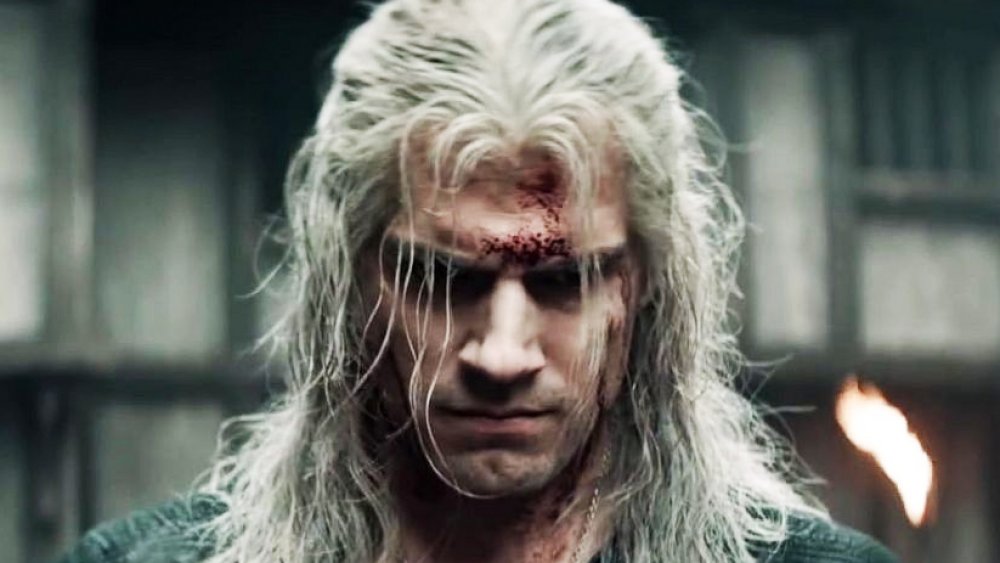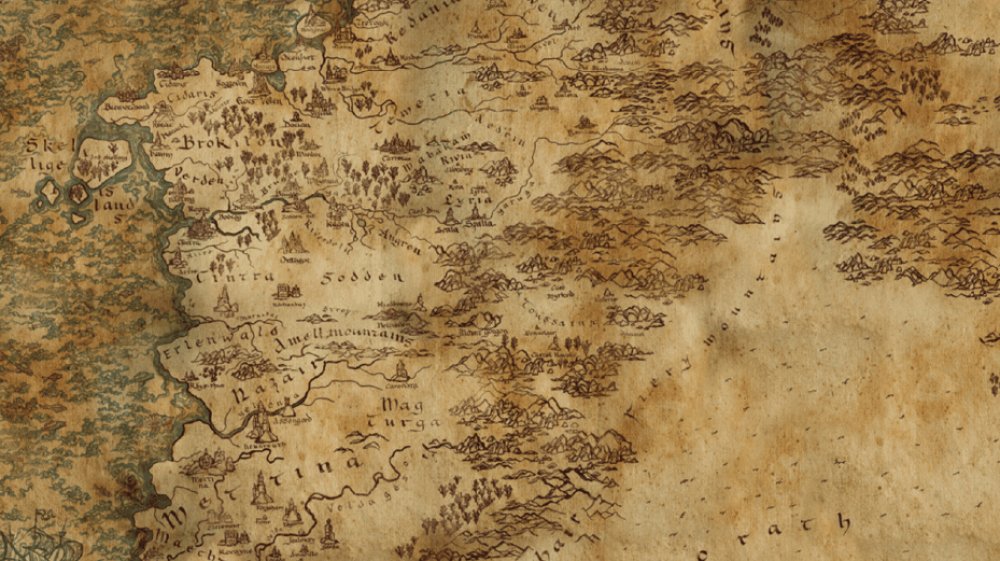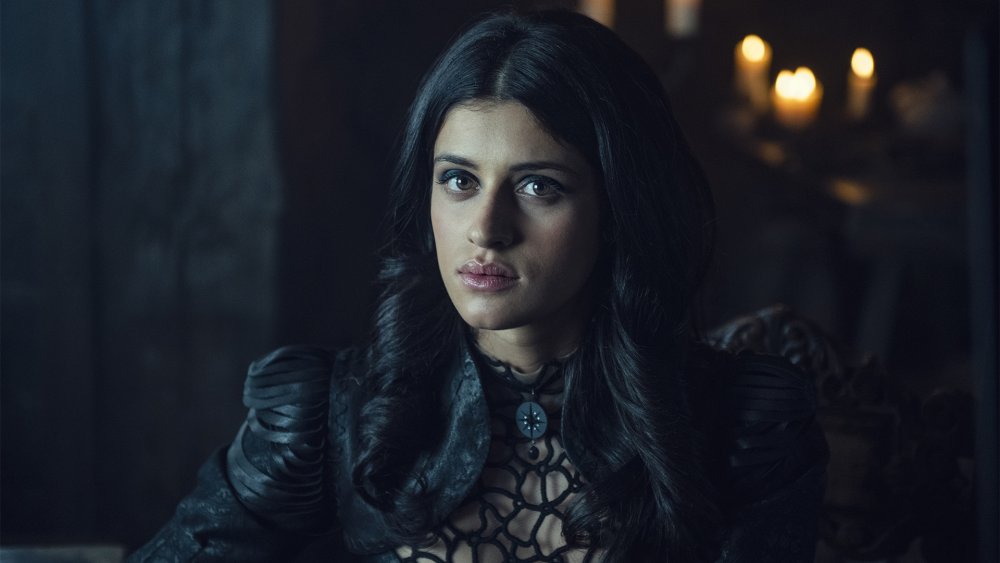How Netflix's The Witcher Is Different From The Video Game Series
The Witcher is based on the fantasy series of the same name by Polish author Andrzej Sapkowski, but most fans in America met Geralt of Rivia a different way: by playing video games. Developer CD Projekt Red's Witcher trilogy is one of the most popular role-playing game series of all time, especially the final entry, The Witcher 3: Wild Hunt, which won a whole slew of Game of the Year awards.
But the new Netflix series isn't based on the games, which Sapkowski calls a "free adaptation... written by other authors." Like the games themselves, it draws directly on the books. In addition, while Sapkowski has little to do with CD Projekt Red's digital recreation of the Continent, the author is a creative consultant on the show, and worked directly with showrunner Lauren Schmidt Hissrich to bring The Witcher to the small screen.
Don't worry. Geralt is still Geralt, and if you like the Witcher games, there's a lot you'll like on the Netflix series, too. Still, if you fell in love with Ciri, Yennefer, Triss, and the rest on your Xbox, PlayStation, or PC, there are a few surprises ahead. Here are some of the differences between the Witcher games and the TV show (with spoilers — be careful) so you can go in prepared.
A rogue by any name
One of the best characters in CD Projekt Red's games and Sapkowski's original novels is the fashionable, womanizing bard Dandelion, who somehow manages to remain one of Geralt's closest friends despite his penchant for getting into trouble. Well, he's just as delightful in Netflix's TV show, too, although make sure you recognize him. In Netflix's The Witcher, Dandelion goes by a different name.
Instead of Dandelion, The Witcher calls the character Jaskier. That seems like a weird change, but it makes a lot of sense once you know why. Jaskier is actually Dandelion's name in Polish, the language of the original novels, and translates to "Buttercup."
In the games, the name Dandelion fits very well — the bard is a dandy, so the pun works — but his flamboyant personality has been toned down for the show. Oh, Jaskier is still a rascal (and actor Joey Batey steals almost every scene he's in), but he's not quite as extravagant as the Dandelion in the games. Besides, the Netflix show has a much more serious, grounded tone. A silly name like Dandelion would stick out like a sore thumb.
Bringing some color to The Witcher's world
The Witcher games are very, very white. That makes sense. Both Sapkowski and CD Projekt Red are based in Poland, where over 97 percent of the population is white. When you're there, you just don't see many people of color.
But The Continent is a made-up place. It's fantasy. You don't have to stick to real-life demographics, and Netflix didn't. In the show, Yennefer is played by Anya Chalhotra, a British actress of Indian descent. Anna Shaffer plays Triss Merigold, who's traditionally had pale skin and bright red hair. Fringilla is portrayed by Mimi Ndiweni, who is black. A new character named Dara, played by Wilson Radjou-Pujalte, has dark skin, too. The supporting cast and background actors are similarly diverse. Everywhere you look, there are a myriad of different colors.
The characters in The Witcher still act like the people that you know and love. They just look a little different. As showrunner Lauren Schmidt Hissrich explains, she wanted to cast the best actors for the parts regardless of race. Not only that, but Hissrich claims that Sapkowski said that a more diverse cast honors his own intentions when writing the novel. If you want a definitive source, you can't get much better than the guy who created the whole thing.
If it walks like a Geralt, and sounds like a Geralt...
For many fans, Doug Cockle is Geralt of Rivia. The actor, who has appeared in everything from Steven Spielberg and Tom Hanks' World War II drama Band of Brothers to 2019's Blair Witch video game, has played the Witcher for a dozen years. He voiced Geralt all three of CD Projekt Red's Witcher games, its card-based spinoff Gwent, and in guest appearances in Soulcalibur VI and Monster Hunter: World. Crack open one of Sapkowski's books and start reading. It's Cockle's voice that you'll hear.
The Witcher star Henry Cavill is in the same boat. He's a big fan of the video games, too, and he loves Cockle's performance. However, while there are many similarities between Cavill's Geralt voice and Cockle's, they're not identical. For one, Cavill is British, and he in the show he speaks with his natural accent. His tone is also deeper than Cockle's, which Cavill describes as "more into the whisper range."
Still, Cavill did borrow Cockle's "gravelly" take on the character, which he blended with his own voice to create something new. Cavill's Geralt doesn't sound the same as the game's, but it still sounds right. That's what really matters.
Leave the silver sword at home
In the games, Geralt carries two swords. There's the steel one for regular fights, and the silver one for fighting monsters. In the show, that hasn't changed, but you're not going to see the Geralt with two swords strapped to his back very often. For the most part, Cavill's Geralt only carries around one sword at a time.
That's a note that comes straight from the books, in which Geralt tends to leave his silver sword on his horse, Roach, unless it's a very special occasion. It's also a practical concern, according to Witcher armorer Nick Jeffries. Silver is a soft and flimsy material, and wouldn't do much good during battle, Jeffries tells Polygon. It's also pricey, and would attract bandits. Geralt already has enough trouble. He doesn't need more.
In fact, all of the weapons and costumes on the show are more grounded than their video game counterparts. What works in a digital world doesn't always work in live action. When costume designer Tim Aslam was instructed not to draw on the video game for inspiration, he replied, "'That isn't gonna happen because, actually, it looks a bit tacky." Unlike the clothing seen in the games, The Witcher's outfits are grounded and practical. They may not be quite as visually memorable, but they hold up a lot better in a fight.
Stop us if this sounds familiar...
The Witcher has a lot of backstory to get through, and unlike the games, it has to appeal to an audience that's not always willing to buy into fantasy. "You don't want to alienate people who've never heard of The Witcher before," Hissrich tells Looper. "In trying to explain what a Witcher was and all of these new names and all of these new places and things that sound unfamiliar... I wanted to make sure I was giving it in bite sized-pieces."
As such, some of the characters that you know from the games have been combined, or given new roles. For example, the wizard Mousesack — or Ermion, as the game calls him — can be found in The Witcher 3, which takes place after the events of the TV series and the books. He won't play a similar role in the show, since he's murdered halfway through the first season.
Conversely, Renfri, the cursed princess in The Witcher's first episode, is only mentioned in passing in CD Projekt Red's trilogy, but her story will seem familiar to anyone who's played the first game: Deidre, the star of the Price of Neutrality expansion pack, is inspired by her. You're going to run into that sort of thing a lot — familiar characters or personalities, but remixed in a way that makes them feel fresh or new.
Time for a geography lesson
Andrzej Sapkowski isn't J.R.R. Tolkien. While the man who created Middle-earth famously said "I wisely started with a map," Sapkowski has never bothered to create a canon guide to the Continent. That hasn't stopped fans — and Sapkowski's editors — from trying to make their own, which Sapkowski has claimed are mostly accurate but which he's never officially endorsed.
As such, anyone working with The Witcher has to scour the text for clues and plot the Continent's locales on their own. As you can imagine, the final products tend to differ. The map produced for the games works pretty well, but contains a few inaccuracies when compared to the books. The map made for Netflix's show, on the other hand, looks like a mashup of the game's map and the one released on the books' Polish website.
When you look up north, especially near Ciri's hometown of Cintra, the two maps match pretty well. Further south, they start to diverge. On the game's map, the kingdoms surrounding Nilfgaard curve inward. On the show's, they jut outward, forming a more jagged coast. The Nilfgaardian region of Mag Turga is further north on the show. The provinces of Gemmera and Etoloa are swapped. Does this make a difference when you're watching? Not at all. Still, given how fully realized Sapkowski's world is in the books, it's an interesting state of affairs.
Some much simpler love geometry
Triss Merigold is one of the very first people you meet in CD Projekt Red's The Witcher, and she's positioned in the first two games as Geralt's main love interest. In The Witcher 3, when Geralt's on-again, off-again girlfriend Yennefer finally shows up, the game embraces a legitimate love triangle. Players have to choose which of the two sorceresses they want to romance. Both make a strong case. Just don't try to double-dip — in the end, you'll regret it.
Well, if you're team Triss, we have some bad news: While Yennefer is a major character on the show, Triss is only a bit part, and she and Geralt don't have many sparks. Oh, sure, they work well together when Triss helps Geralt deal with the striga (another big change to Witcher lore), but as far as Netflix's series is concerned, Yennefer is Geralt's one and only. Romantically, Triss isn't even an afterthought.
It's a shame to lose all that juicy drama, but honestly, The Witcher is busy enough as it is. A love triangle is a nice way to break up a 90-hour game, but show only has eight episodes. There are more important things to spend that time on.
The last wish
If you only know Geralt and Yennefer's romance from The Witcher 3: Wild Hunt, you probably think a genie made them fall in love. That is, after all, the main thrust of the sidequest "The Last Wish," which serves as a sequel to the Sapkowski short story of the same name. In the quest, Geralt and Yennefer hunt a djinn in order to undo the wish that bound the two together. When you succeed, you can either continue romancing Yennefer or dump her. It's your call.
The game implies that magic made Geralt and Yennefer get together. On the show, it's a lot more complicated. Like, a lot. Episode five, "Bottled Appetites," depicts Geralt and Yennefer's first meeting, and while it does feature Geralt saving Yennefer's life by calling on a djinn, the wish itself is ambiguous. As in the books, you don't hear exactly what Geralt wished for.
Further, it's pretty clear in the show that Geralt has feelings for Yennefer. The elf Chireadan flat-out says as much, and Henry Cavill's performance more or less confirms it. In fact, Geralt and Yennefer's mutual attraction is important to the plot. Geralt risks his life for Yennefer because he likes her, and Yennefer's flirty dialogue hints that she feels the same way. The genie might seal the deal, but the sparks are already flying.








